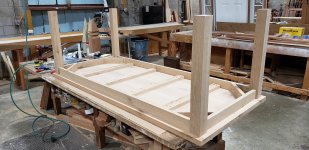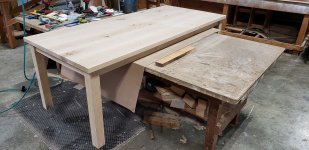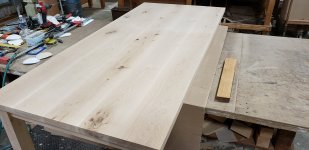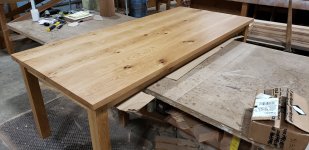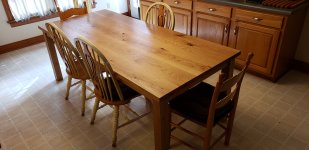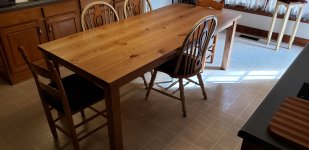Good Ol' Boy
Active member
Here's a dining table I'm in the process of finishing. Its at the shop (work).
Its made from white oak that was rough milled on my dads farm back in the '50's, so the whole thing is somewhat sentimental.
I'll be applying finish over the next 3 weekends or so.
Its made from white oak that was rough milled on my dads farm back in the '50's, so the whole thing is somewhat sentimental.
I'll be applying finish over the next 3 weekends or so.

